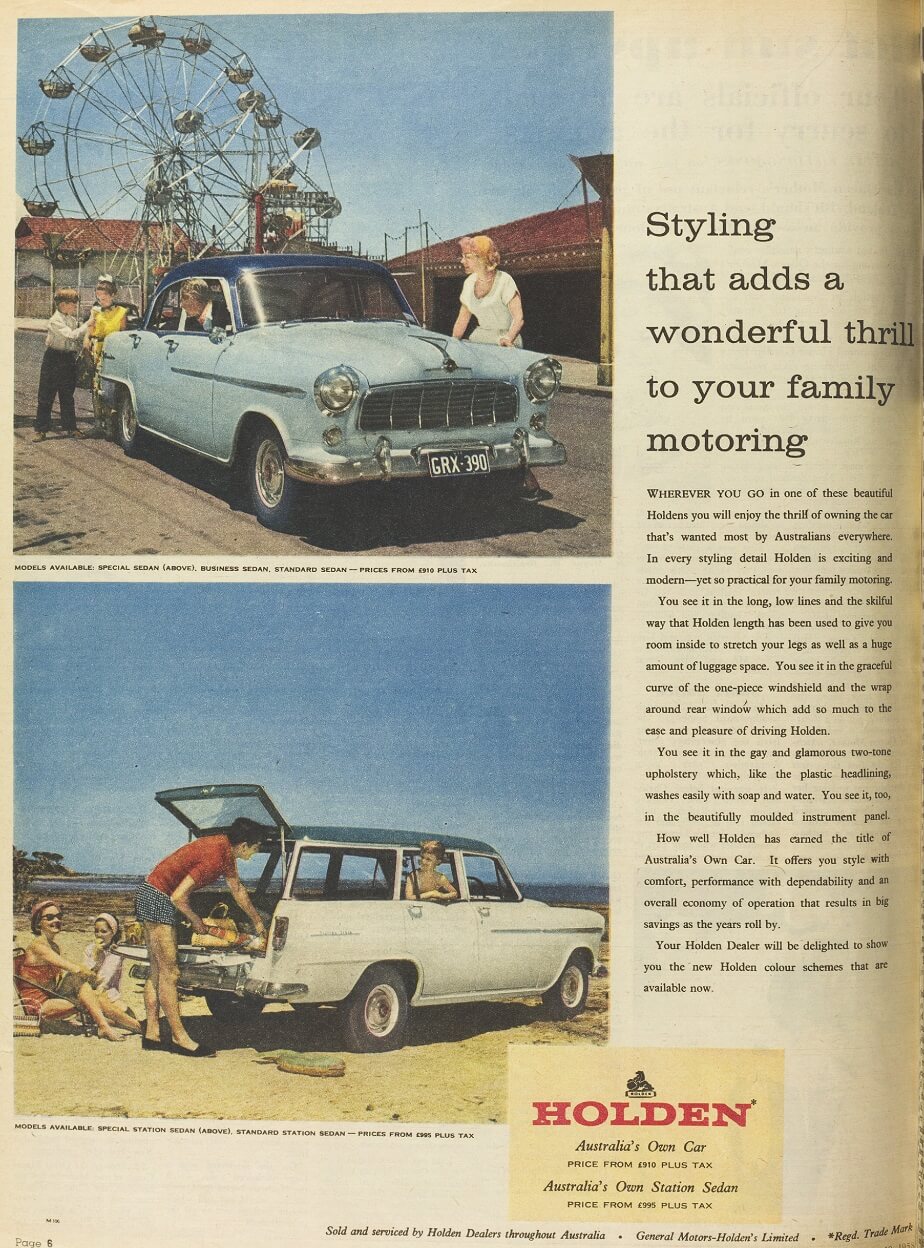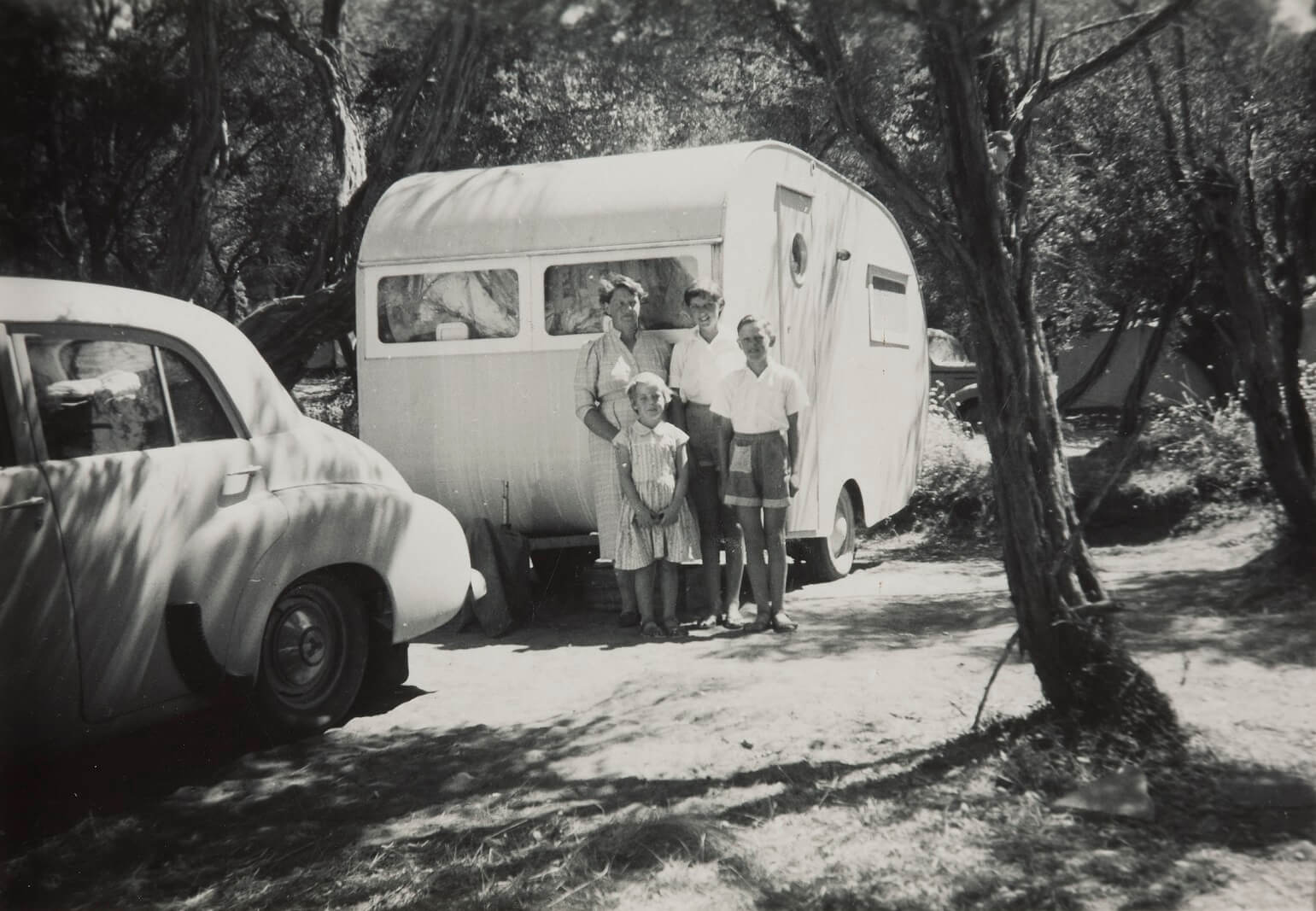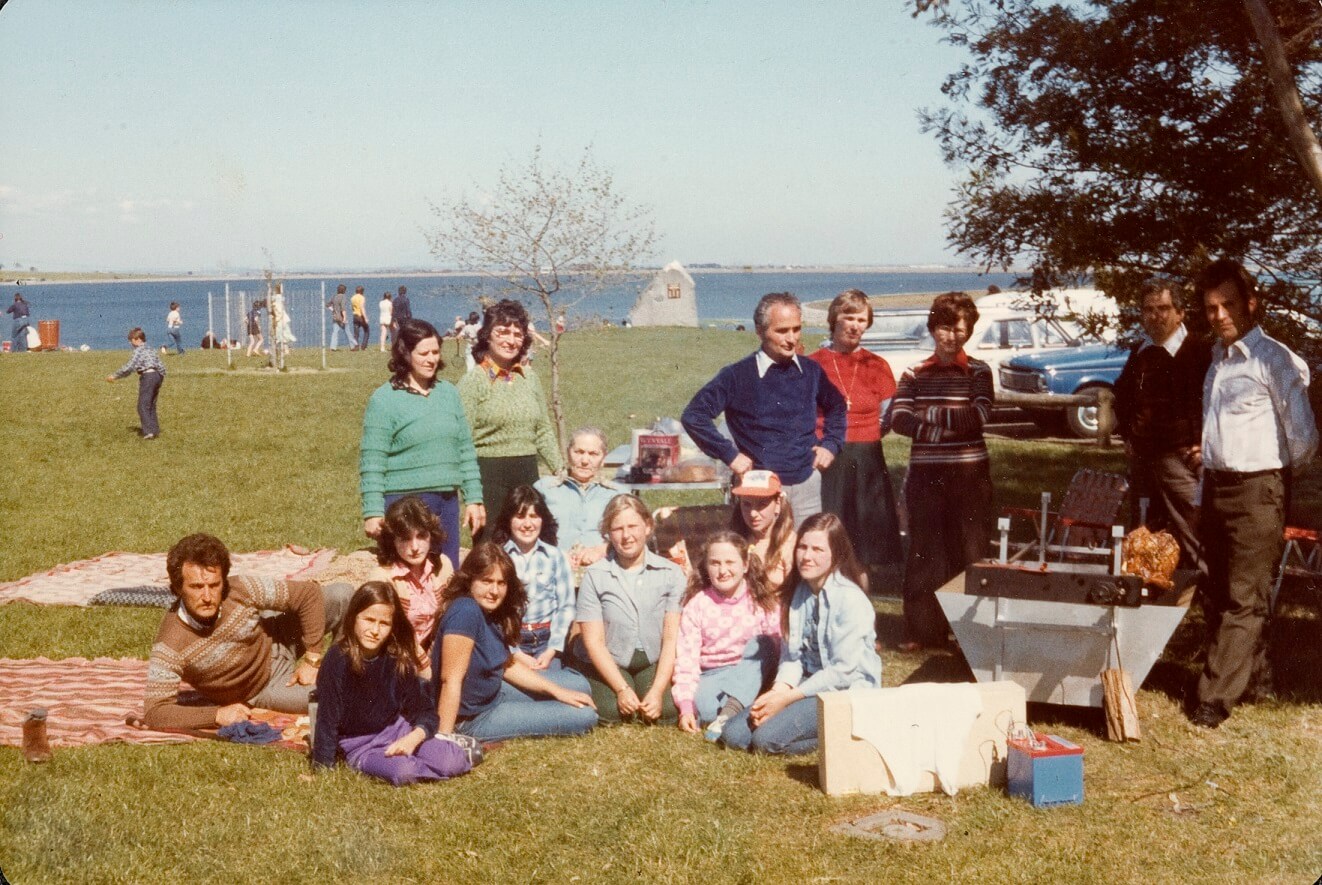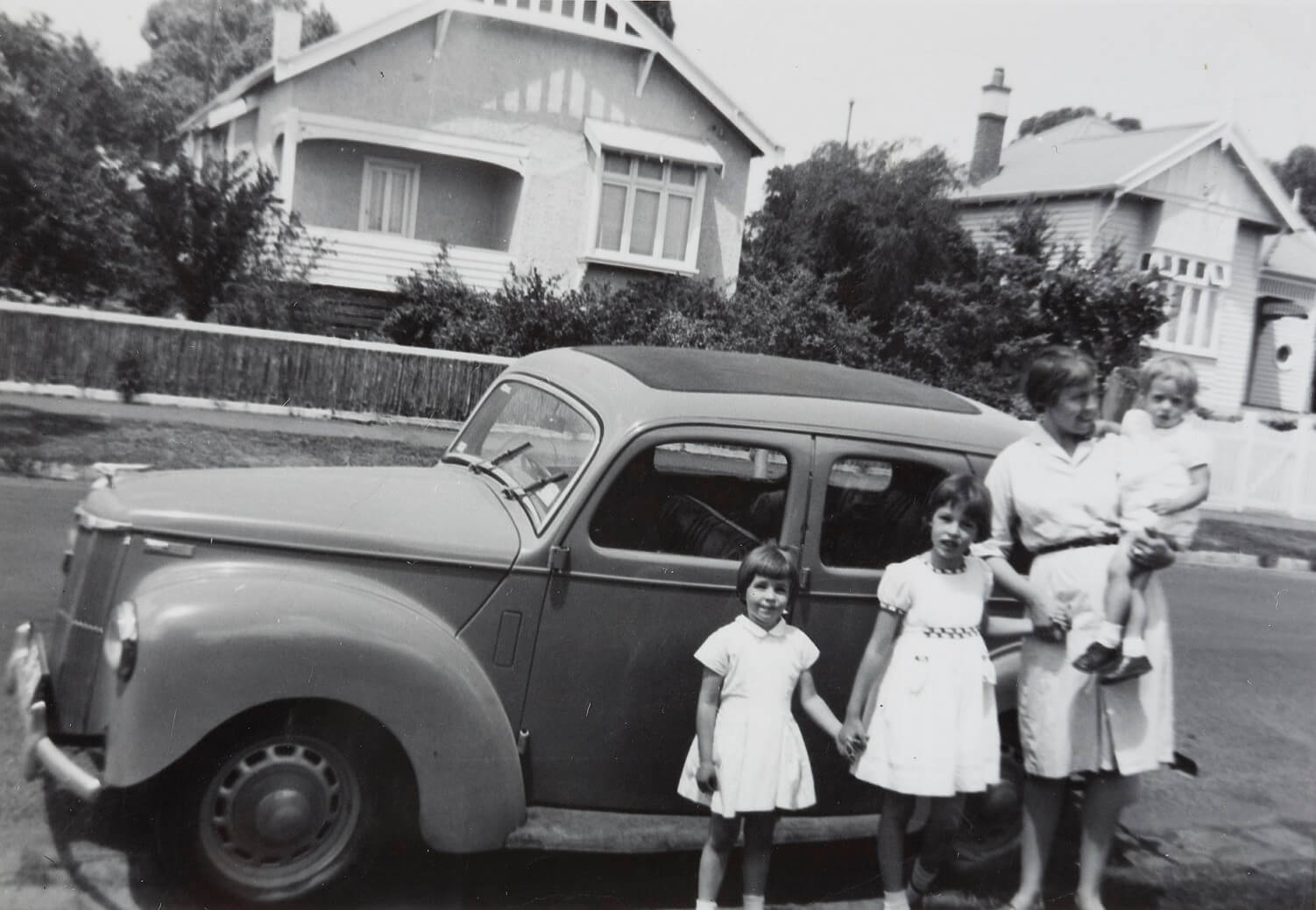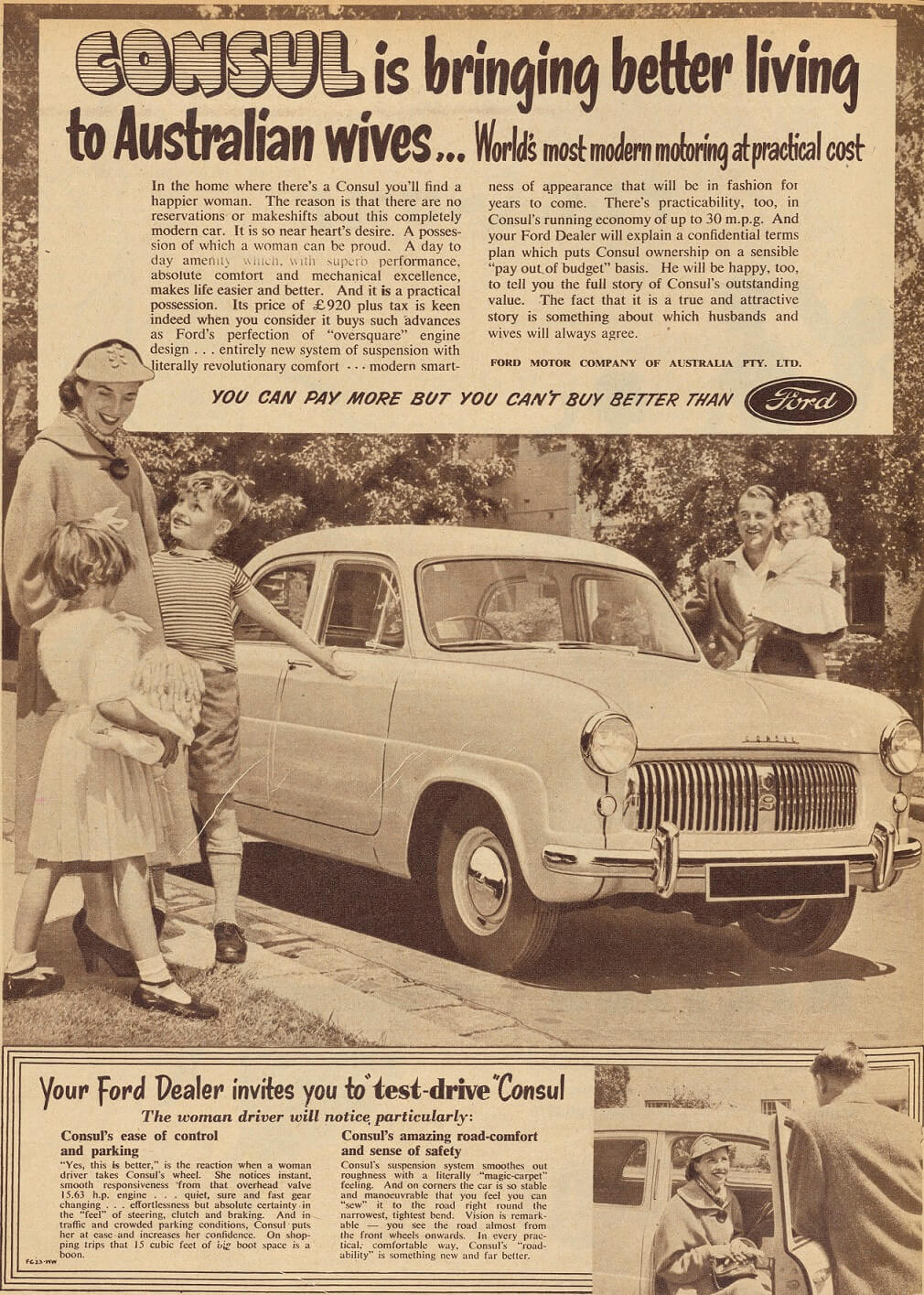If there was any single object that defined the twentieth century, it was the motor car.
In 1945 there was one car for every 14 Victorians. By 1969 the ratio was one to three. Within a generation, the motor car had moved from being a preserve of the wealthy, to be within the reach of ordinary working families.
Advertisements such as this emphasised the new mobility of the Australian family, courtesy of the motor car. Dubbed ‘Australia’s own car’ the Holden was immensely popular: by 1958 it accounted for 40 per cent of all car sales.
Australian Women’s Weekly, 19 February 1958. Reproduced courtesy National Library of Australia.
The motor car transformed family life. For the first time it was easy to visit relatives or friends, go to sporting events, or take a trip to the beach. The ‘Sunday drive’ soon became the favourite family outing.
From the 1950s annual caravanning holidays became part of the country’s cultural norm. This photograph shows the Bunting family on holiday in Sorento, circa 1958. According to one of the children, Jane, ‘the kids had a great time, but my mother Shirley didn't enjoy it much.’
Reproduced courtesy Ron Bunting, Museums Victoria
Papadimitropoulos family picnic, Greenvale Reservoir, 1978
Reproduced courtesy Dimitra Birthisel, Museums Victoria
With the car, family picnics and holidays could take place further from home. For the Papadimitropoulos family, picnics were an all-day affair, and they would leave the house at 6am to get the perfect tree to sit under. The extended family would cram into three or four vehicles and tow a trailer to carry the spit roast.
Cars enabled the sprawling suburbs of quarter-acre blocks. With access to trucks, manufacturers could locate their factories on greenfield sites far from rail or port. Workers followed and new suburban developments mushroomed in Melbourne’s outer ring.
The car ushered in novel urban forms ― the highway, multi-level car park, the service station and roadside diner ― and even changed the way we shopped. The local corner shop disappeared, as did home delivery of milk and bread. Australia’s first ‘drive-in’ shopping centre was built at Chadstone in 1960. It was designed for the motoring housewife, the Herald reporting: ‘Mrs Suburbia can drive into the centre after the morning peak hour with her under-age school children and family dog’.
Woman with three girls in front of their Ford 'Prefect', Glen Iris, 1961
Reproduced courtesy Ms Margaret Swan, Museums Victoria
Until the 1950s very few families had refrigerators, and women shopped most days — hard work for young mothers pushing prams with other children in tow. The incentive to buy a car was strong. Between 1968 and 1972 new female licence-holders, many of them wives and mothers, almost equalled males.
At first women shared the family car with their husbands, but manufacturers soon recognised the growing influence of the woman driver. ‘Once the man chose the car and the woman the colour’, the Royalauto observed in 1964. But now, it claimed, ‘many women drive the family car more often than their husbands.’
Australian Women’s Weekly, 8 April 1953. Reproduced courtesy National Library of Australia.
In the past, ‘having wheels’ was the ultimate status symbol. But there are hints that this is changing. Car ownership is something that a growing minority of young people either ignore or actively oppose.

